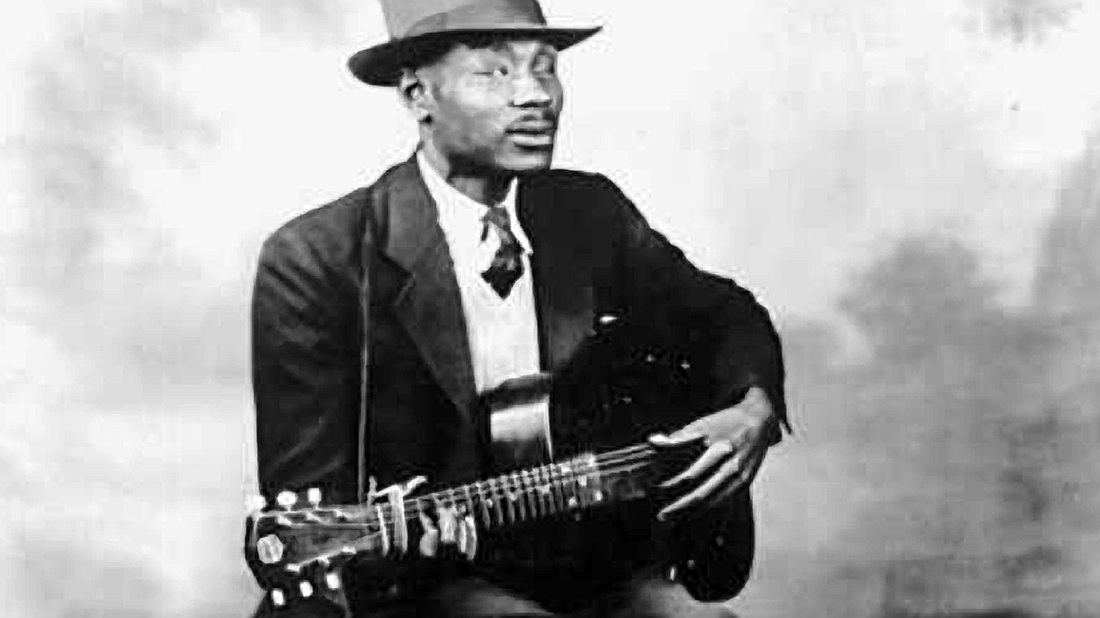Blind Boy Fuller: A Biography
Introduction
Fulton Allen (July 10, 1904 – February 13, 1941), known professionally as Blind Boy Fuller, was an influential American blues guitarist and singer. He was one of the most popular recorded Piedmont blues artists, alongside figures like Blind Blake, Josh White, and Buddy Moss. His distinctive fingerpicking guitar style and raw, expressive vocals left an indelible mark on the blues landscape.

Childhood
Born in Wadesboro, North Carolina, Fulton Allen was one of ten children to Calvin Allen and Mary Jane Walker. While most sources suggest a birth year of 1907, researchers Bob Eagle and Eric LeBlanc indicate 1904. Following his mother’s death, he moved with his father to Rockingham, North Carolina. From a young age, he began to learn guitar and absorbed the field hollers, country rags, traditional songs, and blues prevalent in the rural areas where he grew up.
Youth
In his mid-teens, Allen began to lose his eyesight. Initially, it was thought to be due to ulcers behind his eyes, possibly caused by a form of snow-blindness. However, a 1937 eye examination revealed that his vision loss was a result of untreated neonatal conjunctivitis. By 1928, he was completely blind. This profound change led him to pursue a career as a singer and entertainer, often performing on the streets. He honed his guitar skills by studying the records of country blues players like Blind Blake and observing live performances by artists such as Gary Davis. He performed on street corners and at house parties in various locations, including Winston-Salem, Danville, and eventually Durham, North Carolina.
Having to quit his job as a laborer due to his lost sight, he began playing on street corners. Influenced by the records of Blind Blake and Gary Davis, Fuller became a blues guitarist creating his signature finger picking style. He performed in Winston-Salem, Durham, and in southern Virginia. In 1935, James Baxter Long, a record store manager and talent scout from Burlington, North Carolina, helped Fuller get signed to the American Record Corporation and gave him the name Blind Boy Fuller.
Adulthood
In Durham, Fuller established a strong local following, performing around the tobacco warehouses. He influenced and collaborated with other musicians, including guitarists Floyd Council and Richard Trice, harmonica player Sonny Terry, and washboard player George Washington. His recording career began in 1935 when James Baxter Long, a record store manager and talent scout, arranged a session with the American Recording Company (ARC) in New York City. It was during this time that he was credited as Blind Boy Fuller. Over the next five years, he recorded over 120 sides for various labels. His music was characterized by its directness and uninhibited lyrics, often reflecting his experiences as a blind, underprivileged black man. His repertoire included popular double-entendre songs like “I Want Some of Your Pie”, “Truckin’ My Blues Away”, “Let Me Squeeze Your Lemon”, and “Get Your Yas Yas Out”. He was known for his formidable fingerpicking guitar style, often playing a steel National resonator guitar. While some criticized him as derivative, his ability to fuse traditional and contemporary songs into his own unique performances garnered a wide audience. His up-tempo ragtime hits, such as “Step It Up and Go”, were particularly popular, but he was also capable of deeper, more profound material, as evidenced in his versions of “Lost Lover Blues” and “Rattlesnakin’ Daddy”.
Fuller’s playing style was heavily influenced by Reverend Gary Davis, incorporating powerful bass lines and fast fingerpicking runs. His steel-bodied National guitar provided a loud, clear tone that complemented his articulate voice. He collaborated with J.B. Long on many songs, though the extent of Long’s compositional contribution remains debated.
Major Compositions
Blind Boy Fuller’s discography is extensive, with over 120 recorded sides. Some of his most notable compositions and recordings include:
•”Rag, Mama, Rag” (1935): One of his earliest and most recognized recordings, showcasing his ragtime-infused blues style.
•”Truckin’ My Blues Away” (1936): A popular hokum song that later inspired Robert Crumb’s “Keep On Truckin'” comic.
•”Get Your Yas Yas Out” (1938): Another well-known double-entendre song, famously adapted by the Rolling Stones for their album title Get Yer Ya-Ya’s Out.
•”Step It Up and Go”: A quintessential up-tempo ragtime blues hit.
•”Meat Shakin’ Woman”
•”Night Rambling Woman” (1940): One of his last recordings, made when his health was already in decline.
His songs often explored themes of everyday life, including relationships, poverty, and his experiences as a blind man, delivered with a raw honesty and humor.
Death
Blind Boy Fuller’s health began to deteriorate in his later years. In July 1940, he underwent a suprapubic cystostomy, likely due to a urethral stricture. He continued to require medical treatment and died at his home in Durham, North Carolina, on February 13, 1941, at the age of 36. The official cause of death was pyemia, resulting from an infected bladder, gastrointestinal tract, and perineum, compounded by kidney failure.
His death was a significant loss to the blues community. His protégé, Brownie McGhee, recorded a tribute song, “The Death of Blind Boy Fuller,” and briefly performed as Blind Boy Fuller No. 2 to capitalize on his mentor’s popularity.
Conclusion
Blind Boy Fuller’s legacy as a Piedmont blues pioneer is undeniable. Despite his relatively short career, his prolific recordings and distinctive style profoundly influenced countless musicians. His raw, honest portrayal of life through his music, combined with his masterful guitar playing, cemented his place as one of the most important figures in American blues. His impact continues to resonate, with his songs being covered and his style studied by generations of blues and rock artists, ensuring his enduring presence in the history of American music.

Comments are closed